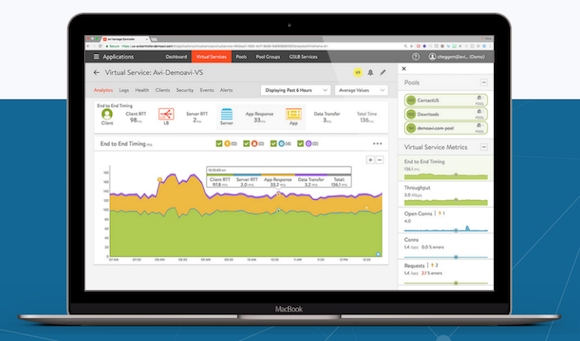Avi Networks: how to manage 'with intent'
This is a guest post for the Computer Weekly Developer Network written by Ides Vanneuville, director of systems engineering EMEA at Avi Networks.
Vanneuville asserts that the next wave of business benefits from technology could come from intent-based networking – if we allow it to.
Vanneuville writes…
Many new technologies promise immense benefits, but what they don’t tell you is the toll that they can have on you and your people. A new solution may offer better performance, but requires additional teams to manage. It may offer more robust security, but requires a horde of custom-scripted policy rules that need attentive care and feeding. Software defined networking (SDN) is a case in point: the output is based on your input, not your intent.
[I would suggest that] Cisco is changing that, with its new intent-based networking (IBN), [this is somewhat of a] re-think of networking that offers agility, resilience and security without creating more complexity or effort on your part.
It’s the next big networking trend, so say the analysts.
Network-automobile parallels
So go with me here for a moment, I would like to suggest to you that networking is like driving a car.
A car driver uses the accelerator, steering and indicators to manage the speed, direction and signalling to other road users. On a network, you must manually manage the switches, routers and load balancers that ensure that traffic arrives safely, accurately and punctually.Both need skilled operators and both could benefit from automation, which has already started with cars getting lane assist and collision detection systems. Full autonomy is on the way.
When cars are fully self-driven, road travel will switch from being input-based (where you have to do all the enabling work) to intent-based, where you just tell the car what you want and it does the rest.
Sadly, many networking services haven’t gotten out of the car park, despite numerous attempts at automation. This is mainly due to legacy architecture and technology integration.
Vendors cracked interoperability, but not information sharing about network traffic, application loads and security. It’s impossible for the network to adapt to changing conditions with any cohesion, so there’s a constant need for manual supervision.
IBN, however, aims to automatically choose the right environment.
The network can adapt using context and analytics to learn and adapt to events across the infrastructure. By changing a quality of service (QoS) policy, it could cope with a period of heavy video conferencing activity, for example, dynamically adapting security policies in an event of a security attack.
The benefit of intent
Companies are moving away from self-contained datacentres towards hybrid infrastructures, but that only complicates matters. The added burden of the IoT won’t help either.
Cisco says intent-based networking is the best approach and events seem to be on its side, as supporting technologies, such as data analytics and machine learning mature.
The combination of these technologies and better use of open APIs, can create the right conditions for process automation and orchestration platforms. All the elements are ready to come together, but how can good intent-based models become deliverables?
Cisco can’t do it alone.
Intent-based networking can only deliver on its promise if every part of the network is ready and able to take part, regardless of who makes it and where it is running.
Vendors must make greater efforts to develop open APIs or their products won’t be able to share information. In the meantime, customers must end their reliance on inflexible legacy appliances and adopt the newer software-based technologies.
This will all take time, but interest is growing and, while intent-based networking may not be fully formed, it’s definitely on its way.
Avi Networks is a company that provides software for the delivery of enterprise applications in datacentres and clouds.




